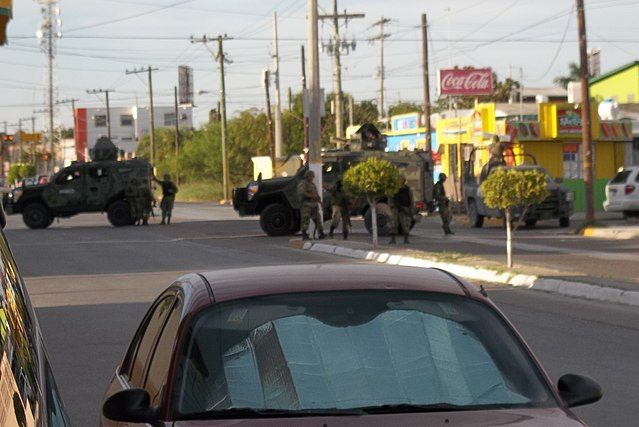Raúl Romero*
Among the profound changes that have taken place in the world over the last 50 years, the predominance of organized crime in the global economy stands out. Transnational organized crime is a business that articulates different companies and involves different legal and illegal actors from various countries. It is a conglomerate that involves bankers, politicians, customs, arms manufacturers, cultural industries, drug and human traffickers, transporters, armed groups and a long etcetera.
The money generated by these businesses circulates around the world and is part of the economic dynamics from the local to the global. According to Global Financial Integrity, in 2017 transnational crime generated between 1.6 and 2.2 trillion dollars annually, with counterfeiting and drug trafficking among its most profitable businesses. According to the United Nations Office on Drugs and Crime, transnational organized crime “includes virtually all serious criminal activities that are for profit and have international implications.” These activities are related to at least 23 crimes.
Transnational organized crime reinforces the global economy and the world political-economic elite by facilitating the processes of dispossession, circulation and accumulation of capital, but also by generating new instruments of control, domination, displacement and elimination of populations. Armed organized crime groups are just a part of these corporations, they are the illegal armies that violently enable the dispossession and accumulation of capital, a complementary task to those carried out by other “legal” forces.

Tracing the history of criminal corporations is important to understand how, where and why they emerged, and how they gained so much strength. Their closest antecedents are the mafias, with “artisanal” forms of organization, grouped in a guild-like fashion, composed mainly of families and networks of families that shared the same ethnic, national or religious identity. Their territoriality was limited. With neoliberalism, the opening of borders for goods and the financialization of the economy, the mafias found new business niches.
Always protected by “legal” groups of national and international economic and political power, the mafias grew territorially and gained access to other businesses. They found it necessary to establish alliances with other mafias in order to confront other criminal groups, increase their area of influence, buy or sell their merchandise or gain access to other networks that provided them with impunity and security. The national and international connections of the mafias evolved, always in accordance with the demands of the market, until they became the transnational criminal corporations that we know today. These corporations managed to weave a complex network of global reach capable of maintaining operations in different countries, regardless of the political-ideological orientations of their governments.
Like the most sophisticated corporations, criminal organizations are organized in a network, which guarantees fluidity and flexibility. Although within each node the organization is usually hierarchical, communication between different nodes is usually more horizontal, always responding to the interests of the network, which does not exempt them from continuing to reproduce their monopolistic character. That is why it is of no use when the “drug kingpin” is arrested, or when the “politician in collusion with organized crime” is tried, much less when the “banker who laundered money” is fined: the network will remain intact because attacking it at its roots would imply going against the system itself. Transnational organized crime is not a flaw in the system, it is an alternative that the same system has strengthened to maximize profits and employ disposable workers.
Transnational criminal corporations have also made possible the development of an elite that interacts with the rest of the national and transnational bourgeoisie, which breaks and modifies the social fabric. It remains to be seen whether transnational organized crime modifies the states and their repressive and administrative apparatus, generating a new type of state, or in fact shows it in its most primordial essence: one of organized violence for dispossession.
The transnational criminal corporations that have made Mexico one of their main operational centers, those that sell drugs to the United States and buy weapons from it, those that illegally traffic people and have become a sort of extension of the State that collects taxes and charges for “security,” these corporations have long spread throughout Central and South America, and throughout much of the world. Ecuador was the recent scene of the operational capacity of these corporations, but they also operate with local articulations in other countries.
Studying transnational criminal corporations and their role in the world’s political and economic dynamics, observing what happened and is happening in Mexico, will help to understand part of the threats we face and to imagine the solutions we must create.
*Sociologist
Original text published in La Jornada on January 27th, 2024. https://www.jornada.com.mx/noticia/2024/01/27/opinion/corporaciones-criminales-trasnacionales-606
English translation published by Schools for Chiapas.
